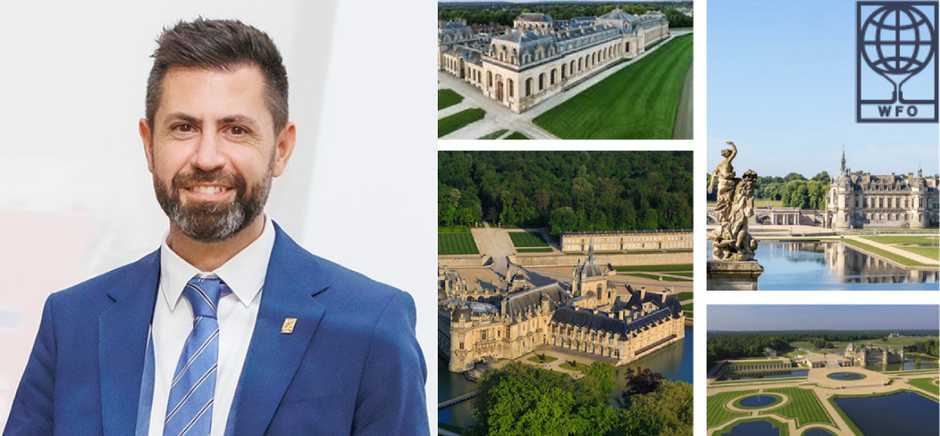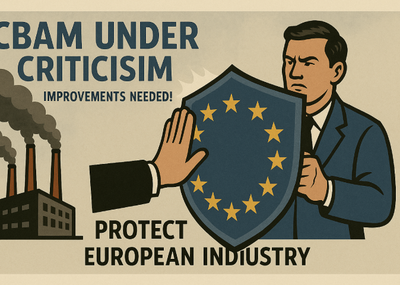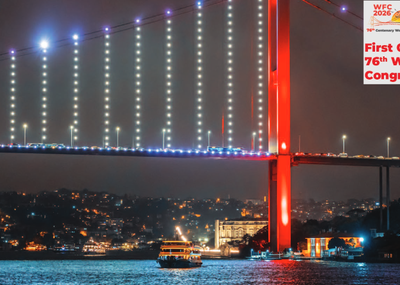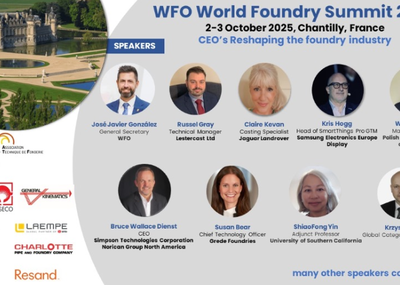A Turning Point for Globalization
The rules of global trade are changing at breakneck speed: tariffs as political leverage, state-driven industrial policy as a location factor, and value chains increasingly shaped by geopolitics. Europe in particular finds it difficult to adapt to this new reality. But what does this mean for the foundry industry – a sector more dependent than most on global markets and networks?
We spoke with José Javier González, Secretary General of the World Foundry Organization (WFO), about risks, opportunities, and the role of the WFO in this period of disruption.
“Owners and managers are watching geopolitical signals more closely than ever before”
FP: What developments do you see in tariffs and trade barriers – and what risks do they create for international cooperation?
González: “The wave of new tariffs, counter-tariffs, and volatile agreements is creating a completely new environment. Supply chains are breaking down, costs are rising – particularly in automotive and renewable energy. Multilateral institutions such as the WTO are under increasing pressure. Many foundries are responding with more regional supply chains, price adjustments, or by relocating production back to domestic markets.
What is new is that owners and managers now monitor geopolitical signals almost in real time in order to react immediately. The erosion of trust in multilateral structures is pushing countries toward bilateral and regional solutions.”
Deglobalization: Both Risk and Opportunity
FP: Does regionalization weaken global networks – or does it create opportunities for reshoring?
González: “Both. Self-sufficiency may sound reassuring, but it can restrict access to raw materials, technologies, and know-how. For a globally networked industry, that is clearly risky. That is why the WFO deliberately promotes international cooperation.
At the same time, opportunities are emerging: production facilities are moving closer to end markets, and investments are increasing – for example in Mexico and Turkey. However, without skilled labor, reshoring will remain an empty promise. We must make the industry more attractive and increase efficiency; otherwise, this trend will lose momentum.”
Europe Under Pressure, Asia in the Fast Lane
FP: How do you assess the three major regions for our industry?
González: “Ultimately, the combination of industrial policy and market support is decisive.”
-
China: “With more than half of global casting production, strong economies of scale, and resilient supply chains, China dominates – but the risk of overcapacity is real. Asia-Pacific will remain ahead.”
-
USA: “The mood is positive. Industrial policy programs are having an effect, modernization has been forced by rising costs, and efficiency has improved. The open question is how trade policy will evolve.”
-
Europe: “The double transformation – digitalization and sustainability – is both inevitable and a major opportunity. But high energy prices remain a serious competitive disadvantage. Instruments such as the Critical Raw Materials Act and CBAM provide support, but without a faster expansion of renewable energy, creeping deindustrialization looms.”
Quality Requirements: Diversity and Convergence
FP: Do quality requirements differ regionally – or are they already being harmonized?
González: “Both. Different regulations, cultures, and market expectations shape the landscape – from sustainability to innovation to delivery times. At the same time, we see a clear trend toward harmonization: ISO, ASTM, global standards in automotive and aerospace, and Industry 4.0 technologies. Political volatility, however, can push this development in either direction – toward unification or fragmentation.”
Growth Drivers: Defense, Reshoring, Sustainability, Digitalization
FP: Where do you see the greatest potential for the coming years?
González: “Four areas stand out:”
1. Defense: “Rising military spending is creating demand for precision castings in vehicles, ships, aircraft, and munitions. Technically demanding, but highly attractive.”
2. Reshoring & Regional Hubs: “Production relocation combined with automation is a major opportunity for agile foundries.”
3. Sustainability & Circular Economy: “CO₂ reduction, energy efficiency, and technologies such as carbon capture are driving investment. Foundries mastering low-carbon processes and circular models will unlock strategic markets.”
4. Digitalization: “The combination of digital process control, sustainable solutions, and agile supply chains – complemented by strategies to tackle the skills shortage – creates lasting competitive advantages.”
“AI is not a trend, it is a differentiating factor”
FP: Where do digitalization and AI deliver the greatest value – in production, logistics, or quality assurance?
González: “In all areas. By 2025, digitalization is the top investment theme in many countries. AI is already part of daily operations: it improves error detection and process optimization, reduces scrap, shortens cycles, and increases energy efficiency. Digital twins enable optimization before production even begins. In the supply chain, AI forecasts support material planning and logistics.
In short: AI is no longer a trend – it is the decisive differentiating factor.”
WFO as the Voice of the Industry
FP: How can a global organization bring together such diverse members?
González: “Through clear governance: one country, one vote, rotating leadership roles – regardless of market size. We focus on issues that matter to all, such as access to data. At the same time, we strengthen communication and presence to ensure that specific needs are heard. Shared goals are the foundation for shared success.”
FP: Moderator, industry voice, or innovation driver – how does the WFO see itself?
González: “As a collective voice and at the same time a driver of transformation. This is exactly what the 2025 Summit stands for, with participants already registered from 16 countries across four continents. This diversity is our strength – and in Chantilly we will create the spaces to develop solutions together.”
World Foundry Summit 2025
2–3 October 2025, Chantilly (France) Two days of strategy and technology with top-level international speakers – plus excellent opportunities for exchange and networking. CEOs reshaping the Foundry Industry.
FP: José Javier, thank you very much for your insights and statements. We wish the Summit in France every success!
The interview was conducted by Thomas Fritsch, Editor-in-Chief, Foundry-Planet.












